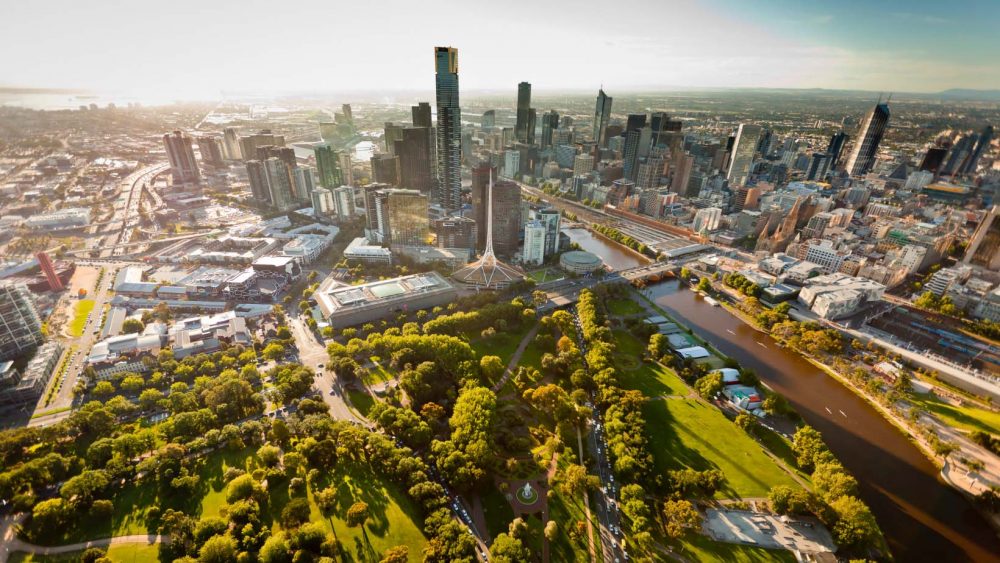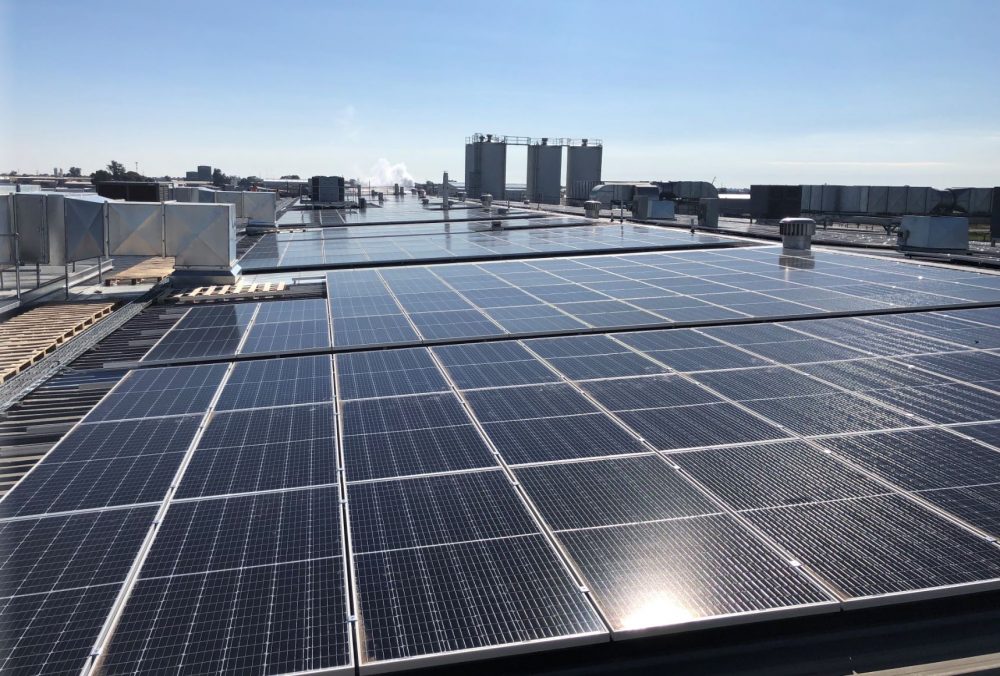For businesses in Victoria, reducing carbon emissions doesn’t just benefit the environment — it can also put cash back into your business.
The Victorian Energy Upgrades (VEU) Program is a long-standing government initiative and key driver of Victoria’s commitment to emissions targets of net zero emissions by 2045 and 95% renewable energy* by 2035.
The VEU program rewards energy efficiency improvements with tradable certificates called Victorian Energy Efficiency Certificates (VEECs). Eligible projects and upgrades (such as solar, lighting, heating and cooling, or manufacturing equipment) can generate VEECs which can then be sold to large emitters, such as energy retailers and heavy industry, turning sustainability into savings and accelerating investment returns.
Contents
VEECs at a glance
As of 2025, over 96.8 million VEECs have been created under the VEU Program. In 2024 alone, 4.9 million VEECs were registered. Since the program began, emissions reductions through VEECs projects are the equivalent to taking 27.2 million cars off the road for a year.
How the VEU Program and VEECs work
In the case of an eligible renewable energy project, VEECs are created based on the actual renewable benefit of the system following a minimum 12-month measurement and verification (M&V) process.
The VEECs process requires an Accredited Person (AP), such as Acacia Energy, to manage the process, establish the pre-upgrade performance, known as the ‘baseline’ and propose the M&V process for the ‘Impact Assessment’. An independent Auditor is selected to verify the ‘Impact’ performance of the upgrade.
Creation of VEECs can be done in two ways.
- Annual Creation: Under this approach an annual M&V process is submitted for approval prior to the system being installed. Once the system is installed, the approved annual M&V process is performed and the results submitted to the regulator for review and approval. VEECs for the annual period are traded every year throughout the system life.
- Up-Front Creation: Under this approach, the M&V process is submitted and approved on the premise that the results of the first year of operation will be representative of the performance of the system throughout its life. Once the system is installed, the approved up-front M&V process is performed after one year of operation and the results submitted to the regulator for review and approval. VEECs for the entire system lifetime period can be traded once approved; this approach brings forward the financial returns of the entire project term.
Regardless of which path is chosen for creation of the VEECS, the process from project start to first financial return can take 18 to 24 months.

Common upgrades for businesses
The VEU Program supports a wide range of commercial energy efficiency activities. Common upgrades include solar PV systems, LED lighting retrofits, HVAC system replacements, high-efficiency boilers, and refrigeration improvements. Businesses in manufacturing and industrial sectors may also benefit from process heating upgrades, variable speed drives, and compressed air system improvements. Each of these upgrades can contribute to significant energy savings and, in turn, generate a substantial number of VEECs.
Steps to a successful VEECs project
To complete a VEECs project, start by engaging an Accredited Person (AP) who will assess your site, propose eligible activities, and submit the project to the regulator. Engaging an AP (such as Acacia Energy) early is crucial to successfully claiming VEECs as they will need to prepare and submit the proposal on your behalf before the system is installed.
After your upgrade is installed and commissioned, the 12-month measurement period begins. Once that period is complete, data is verified and certificates are created. These are then sold to energy retailers, and the payout is distributed to the project owner. Your AP will handle all of these details on your behalf.
- Assessment & feasibility
Engage an Accredited Person (AP) to evaluate your site, define a baseline, and assess eligibility. - Proposal submission
The AP registers your project under the VEU Program with projected savings and submits the M&V process for approval.
Installation cannot commence until the project is approved. - Installation & commissioning
Once the upgrade is complete and compliant, the upgrade must operate for at least 12-months to create the data for the M&V process. - Measurement & verification
After a minimum of 12-months operation, the actual energy savings are measured and compared to the baseline and the performance report is independently verified. - Certificate creation
The verified savings are translated into VEECs and submitted for registration. - Sale & payout
VEECs are sold on the open market. You receive payment once sold, minus AP and admin fees.
VEECs project timeline example
| Phase | Timeline |
| Project scoping and audit | Month 0 |
| Proposal submission | Month 1 |
| Installation and commission | Month 2 |
| Measurement begins | Month 2 |
| Measurement ends | Month 14 |
| Certificate submission | Month 15 |
| VEECs sold / payout | Month 18 – Month 24 |
Example VEECs project and payout calculation
A commercial facility installs a 1MW solar PV system, leading to an annual energy saving of 1,000 MWh, which equates to 1,000 VEECs.
If the market price is $75 per VEEC, the potential annual gross return is $75,000. After accounting for administrative and AP fees (typically around 15%), the net return would be approximately $63,750—a solid offset against the upfront cost of the upgrade.
If the Up-Front Creation approach was adopted, and the upgrade life under the VEU Program was 5 years, this would generate $318,750 of value after one-year of operation.

Can I claim VEECs along with STCs or LGCs?
Small-scale Technology Certificates (STCs) and Large Scale Generation Certificates (LGCs) are created under a national scheme to financially incentivise carbon reduction technologies and cover much of the same technology as the VEU Program does.
You cannot claim both VEECs and STCs/LGCs for the same activity or energy savings. However, you can claim both at a location if:
- The VEECs are generated from energy efficiency upgrades (e.g. LED lighting, HVAC, process improvements), and
- The STCs or LGCs are from renewable energy generation (e.g. rooftop solar systems),
- And they apply to different systems or activities at the same site.
For example, a factory could:
- Upgrade its lighting and claim VEECs, and
- Install a solar PV system and claim STCs or LGCs.
You cannot claim both for:
- The same activity (e.g. claiming VEECs and STCs for a solar hot water system).
- The same energy savings or emissions reductions — this is considered double dipping.
What does the legislation say?
Both the Victorian Energy Upgrades (VEU) Program and the federal Renewable Energy Target (RET) have rules to ensure certificates aren’t claimed under more than one scheme for the same benefit. Accredited Persons (APs) under each scheme are required to verify and declare this during the application process.
If you’re planning a project that could involve both energy efficiency and renewable generation, speak to an Accredited Person (AP) early. They can help you structure the project to maximise eligible certificates across schemes without breaching compliance.
You can read more about STCs and LGCs here.
Unlocking value with the VEU Program
The VEU Program offers more than just environmental benefits—it can provide substantial returns on investment when implemented well. With over 96 million VEECs created to date and thousands of projects completed annually, the program has proven its value across industries.
By understanding the process, partnering with the right Accredited Person, and planning for the timeline, your business can turn energy efficiency into a competitive advantage.
Talk to Acacia Energy today about how you can generate revenue through the VEU Program, VEECs, STCs and LGCs.